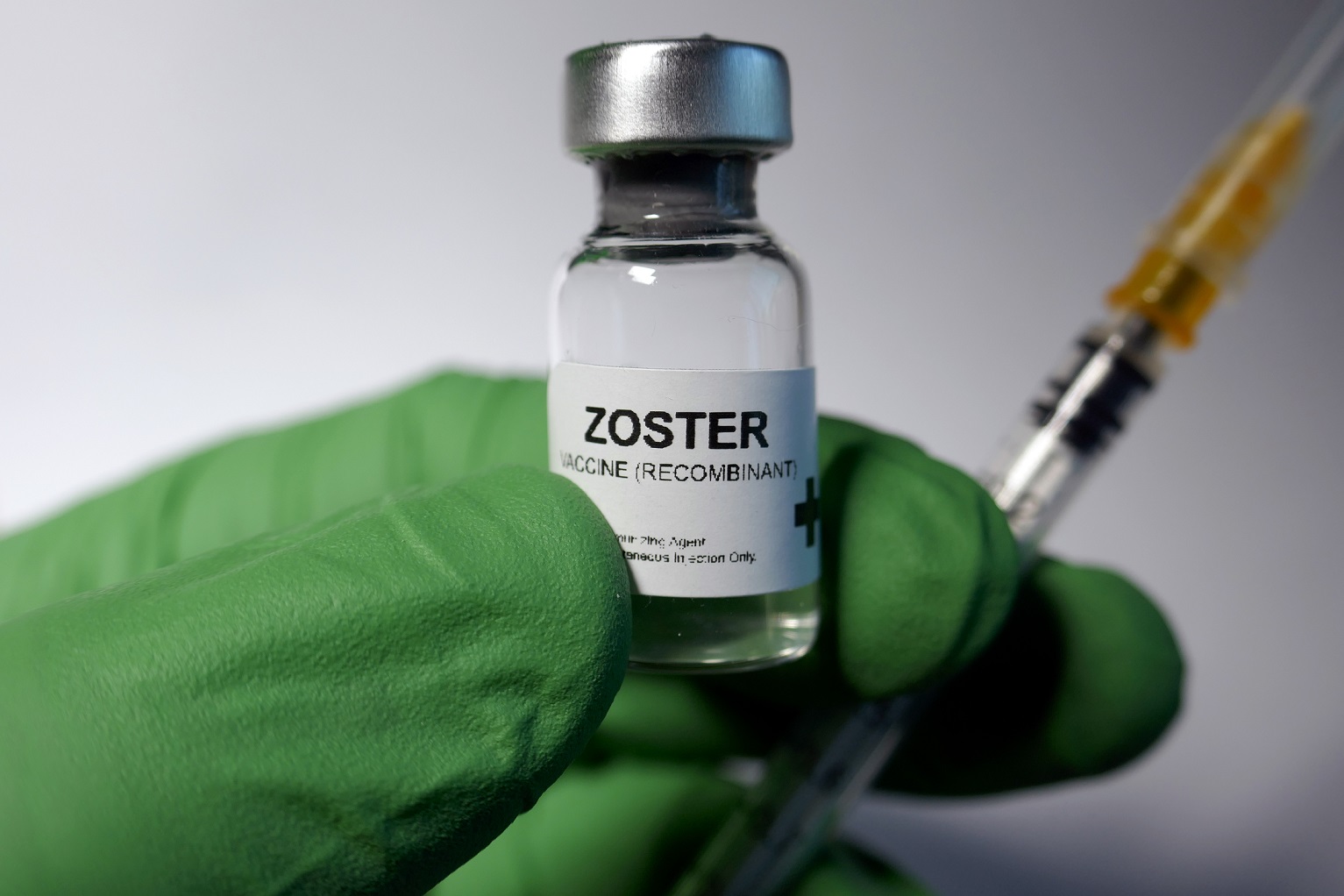Nine new reports of blindness in patients who used Ozempic and Mounjaro, which are injectable GLP-1 agonist drugs containing semaglutide or tirzepatide, have prompted experts to sound the alarm on yet another potential side effect of the popular weight loss drugs. Sudden vision loss and blindness due to block of blood flow to the eyes are the latest in a litany of alarming serious side effects that have surfaced after more widespread use of the popular weight loss injections, which previously include an increased risk of thyroid cancers, pancreatitis, gastroparesis or stomach paralysis, kidney problems, arthritic disorders, and more.1 2
Of the nine reports, one woman received a single dose of semaglutide for her diabetes and woke up the next morning blind in her left eye. She stopped the medication for two months as a result, but due to her diabetes, she had to resume treatment. Just two weeks after restarting, she experienced vision loss in her right eye as well.
Another woman on the drug for a year woke up one morning with what she described as a “painless shadow” over her left eye. Tests revealed blood vessels in her retina had become damaged, causing blindness. Another user experienced bleeding in his left eye after taking tirzepatide for a year, but doctors urged him to continue taking the medication since they could not directly link his condition to the weight loss drug.1
Latest Reports Echo Previous Research: GLP-1 Drugs Linked to Vision Loss Risk
The nine reports are detailed in a newly published investigatory review in JAMA Opthamology that found an “increased NAION risk with semaglutide exposure relative to non-exposure.” NAOIN, non-arteritic anterior ischemic optic neuropathy, is a condition that occurs when blood flow to part of the optic nerve is reduced, leading to sudden vision loss or blindness. Patients also experienced other conditions, such as papillitis and paracentral acute middle maculopathy—both conditions that affect vision—after taking semaglutide or tirzepatide. While the report has not yet been peer-reviewed, the growing body of research does suggest a higher risk of the weight loss drug users getting the condition than previously thought.1
“This review was not conducted in any way that we can say these drugs caused the complications,” said lead author Bradley Katz, MD, PhD, a professor in the University of Utah’s Department of Ophthalmology & Visual Sciences. “Further studies are needed to test our hypothesis. However, this is an important issue for ophthalmologists as we monitor the usage of these drugs and how to best be in communication with our patients about them.”3
Study Finds Increased Risk of Vision Loss for GLP-1 Agonist Drug Users
A July 2024 study involving over 16,000 patients found that those prescribed semaglutide had a fourfold increased risk of developing NAION compared to those not using GLP-1 receptor agonists. These findings echo the latest reports and highlight a growing concern about the potential vision-related risks of semaglutide, emphasizing the need for further investigation.4
“Although there are some interesting studies on the topic, it is premature to conclude that the association between semaglutide and NAION is a causal association,” Andrew Lee, MD, spokesperson for the American Academy of Ophthalmology and a neuro-ophthalmologist at Houston Methodist Hospital said in an interview about the new patient reports of sudden blindness.5
Eyeing Record Profits, Novo Nordisk Insists Safety Comes First
As expected, Novo Nordisk, the manufacturer of the blockbuster weight loss drugs, maintains that patient safety is its “top priority”—despite facing over 900 lawsuits related to its weight loss medications. “Novo Nordisk, on its part, has conducted an analysis across randomized controlled clinical trials with GLP-1 receptor agonists, including a blinded ophthalmologist evaluation to confirm NAION diagnoses. These data do not suggest a causal relationship between GLP-1 RA use and NAION events,” a spokesperson said in a statement.6
Researchers wrote in JAMA Opthalmology that the exact cause is still unclear, but they do suspect that the blood sugar-lowering effects of these weight loss drugs may contribute to eye damage by affecting the blood vessels in the eye. A five-year ongoing study is investigating the impact of semaglutide on eye disease in individuals with Type 2 diabetes.3 7
Novo Nordisk’s fourth-quarter operating profit soared a whopping 37 percent to $5.12 billion, blowing past analysts’ expectations of $4.69 billion. The company expects operating profit to grow another 19 percent to 27 percent in 2025, following last year’s 26 percent jump. Wegovy continues to be a main driver of the drugmaker’s success with sales more than doubling in the fourth quarter of 2025. According to several market analyses, the market value for weight loss drugs could reach $200 billion in the next decade, with some analysts predicting even higher figures up to $144 billion by 2030.8
If you would like to receive an e-mail notice of the most recent articles published in The Vaccine Reaction each week, click here.
Click here to view References:1 Joshu Sterne E. More Americans on Ozempic go BLIND as doctors sound alarm over potentially startling side effect. The Daily Mail Feb. 11, 2025.
2 Baker A. More Serious Side Effects from Ozempic and Wegovy Weight Loss Drugs. The Vaccine Reaction Oct. 7, 2024.
3 University of Utah Health. John A. Moran Eye Center physician scientists keeping an eye on patients taking new class of diabetes and weight loss drugs. University of Utah Health Jan 30, 2025.
4 Baker A. Weight Loss Drugs Ozempic and Wegovy Linked to Vision Loss. The Vaccine Reaction July 22, 2024.
5 O’Neill M. Ozempic May Be Linked to Cause of Sudden Blindness, Another Study Shows. Health Jan. 22, 2025.
6 Beard M. Some Ozempic users are developing serious eye issues that lead to blindness. New York Post Feb. 12, 2025.
7 U.S. National Library of Medicine. A trial investigating the effect of semaglutide on diabetic retinopathy in subjects with type 2 diabetes (FOCUS) (Study No. NCT03811561). ClinicalTrials.gov Feb. 22, 2025.
8 Fick M et al. Wegovy sales double to boost Novo Nordisk’s fourth quarter as growth set to slow. Reuters Feb. 5, 2025.













4 Responses
When one can can discard
sensible eating, ie a healthy eating plan and exercise and just shoot up, why worry about those side effects?
I suspect more and more will continue to emerge, but think of the profit
That will make it all perfectly acceptable
I read this article because I have an adult son taking this type of medicine. You have subscripts of “1, 2, 3, 4, 5, 6, 7, 8″but no subscript resource information. They should connect for further reading. I won’t share this article without being able to read the sources for some of the information. Please make corrections. Thank you.
Click just above on where it says “Click here to view References:”
” one woman received a single dose of semaglutide for her diabetes and woke up the next morning blind in her left eye. She stopped the medication for two months as a result, but due to her diabetes, she had to resume treatment. Just two weeks after restarting, she experienced vision loss in her right eye as well.”
These medical prescribers are totally insane.There were and are other medications for diabetes besides this horror of a drug. What made this woman’s physician think that she had to go back on the semaglutide? Besides that, diet exercise, and nutrition counseling will work for Type 2 diabetes a lot of the time if the patient will just give lifestyle changes a try.
We are in this position because the medical cartel has convinced every one that there is a pill for every ill, and the public has totally bought into the mind set. No one wants to have to do the hard work of taking care of one’s own health.
Thanks to her excuse for a physician, the woman is now totally blind in both eyes.
As for the rest of the article, in my view there is already enough evidence of this drug causing blindness to take it off the market. All the researchers are just pulling the “plausable denial” card.